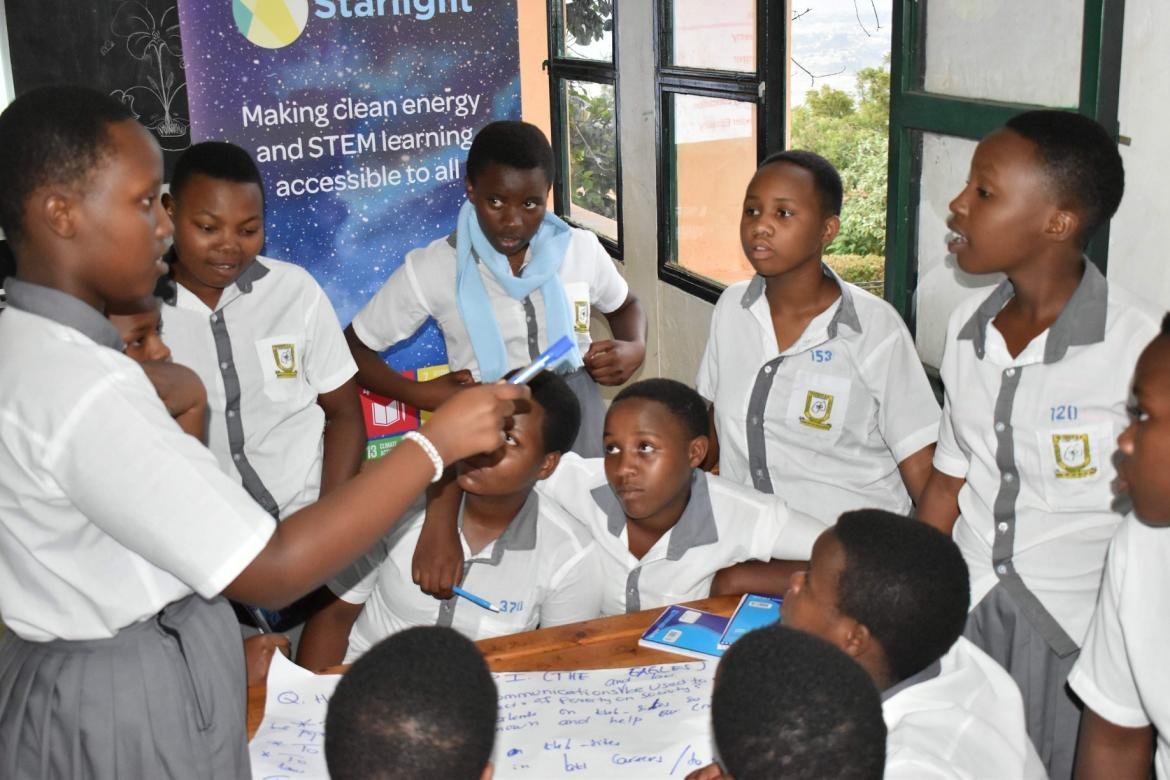Women in STEM: A key to unlock Africa’s socioeconomic potential

On August 12, we celebrate all youth, in particular those involved in youth-led initiative that are re-thinking education across the world during this pandemic.
This is the 8th post in 2020 of a blog series begun in 2017 as part of the collaboration between the Association for the Development of Education in Africa (ADEA) and the Global Partnership for Education (GPE).
Currently there are 1.8 billion young people between the ages of 10 and 24 in the world. This is the largest youth population ever. However, more than half of all children and adolescents aged 6-14 lack basic reading and math skills despite the majority of them attending school.
This global learning crisis threatens to hold back progress towards the 2030 Agenda and Africa’s Agenda 2063.
This year’s theme for International Youth Day, “Youth Engagement for Global Action”, highlights how youth engagement at the local, national and global levels is enriching national and multilateral institutions and processes. Their engagement also draws lessons on how youth representation in politics can be significantly enhanced.
Why is girls’ participation in STEM a challenge?
Today, the link between the human capital development, future of work, and STEM (science, technology, engineering, mathematics) is a global concern, and it’s crucial also in Africa. For the African Union, it’s also how the continent will attain sustainable economic growth and social progress. STEM is one of the main priorities of its Agenda 2063 blueprint.
People-centered development, gender equality and youth empowerment are key in this changing global context and STEM revolution. One of the continent’s greatest need is skilled human resources if it is to thrive in the new technology-driven global economy and world of work.
In many developing countries, key drivers preventing women and girls accessing STEM include social norms and traditional cultural values. Often societal norms discourage girls from studying STEM, considering it a domain for boys and males.
Perceptions are reinforced by the limited number of successful women in those domains who can mentor and advocate for girls’ education in STEM.
Indeed, according to the 2016 Gender Gap Report published by the World Economic Forum (WEF), women continue to remain under-represented among STEM graduates, where the global gender gap stands at 47%, with 30% of male students graduating from STEM subjects in contrast to only 16% of female students.
An important factor in motivating girls to enroll in STEM programs is helping them overcome anxiety and gain confidence in their abilities. To help girls feel confident in making choices, education systems need to improve career guidance and orientation services and promote role models.
Often girls decide to embark on STEM careers in middle and high school, but addressing the workforce participation problem after college is too late. Interventions are needed early on to encourage girls into STEM and so that they perceive it as a rewarding career.
Boosting girls’ interest in STEM
“Everybody starts out as a scientist. Every child has the scientist's sense of wonder and awe. The problem is how to remain a scientist once we grow up!”
Carl Edward Sagan, US Astronomer
Despite the projected increase in ICT investments, STEM education at the elementary and secondary levels is not hands-on or centered on real-world problem solving, which are the proven strategies for making science appealing.
For 49% of students under the age of 14, STEM learning relies on classroom textbooks reading and memorization. It does not include interactive, industry-based approaches to learning. Young people are, however, beginning address these challenges through innovative solutions.
The Rwandan government has an ambitious strategy to become a regional tech hub. It has put into action a five-year ICT Sector Strategic Plan (2018-2024), which has attracted foreign investment. Based on the goals set in this plan, organizations like Starlight are bringing their contribution by working to transform the nation from agrarian into a knowledge-driven economy.

Starlight, a women’s and girl’s youth-led organization in Rwanda, addresses gender inequality in STEM. It creates a holistic learning program for students through careers, role models, life skills and practical projects, such as the solar kits to introduce the students to different STEM principles in a fun and interactive way. The whole process sparks students’ creativity and imagination and boosts interest in this key field.
Why does it matter to link women to STEM?
To compete in the labor market, youth need practical skills at the elementary and secondary school levels. The future of work needs youth with digital, technical vocational education and training (TVET) competencies to develop and adapt successfully to a swiftly changing economy.
Honing 21st century skills - problem solving, critical thinking, creativity, communication, time management and financial literacy - is critically important.
Women and girls tend to leverage high value social capital compared to men and boys. In developing countries in particular, women have authentic relationships with their community members, and this allows them to be in tune with the most pressing problems of their community. A higher value social capital, combined with a social justice mindset, a STEM education, and social entrepreneurship, can lead to an increase of societal welfare.
By increasing the number of female problem solvers and changemakers, we can alter the allocation of scarce resources to solve community problems. In a world infused with technology at every level, the right allocation of resources to solve the right problems becomes paramount. It is time to unlock women’s and girl’s potential in STEM!